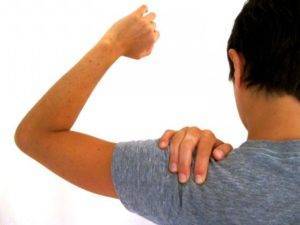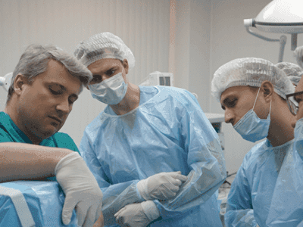
Currently, according to medical statistics, all people over the age of 25-30 suffer from symptoms of cervical osteochondrosis. The disease affects this part of the spine more than others. Pathology is a progressive degenerative process affecting the intervertebral discs and spine located in the neck. The disease is equally common in men and women.
This is a dangerous and complex form of osteochondrosis because of the large blood vessels that supply the brain to the neck and the large number of nerve endings. Impaired innervation and blood flow lead to a deterioration in the supply of oxygen and nutrients to the brain.
Disease Symptoms
Symptoms of cervical osteochondrosis are more pronounced, albeit to a lesser extent, than in other parts of the spine. This is due to the proximity of the vertebrae in the neck and the low height of the intervertebral discs. This anatomical feature occurs with osteochondrosis, where the nerve endings, spinal cord and blood vessels are denser.
General symptoms:
- pain syndrome;
- weakness and decreased sensitivity in the upper extremities;
- restriction of neck mobility;
- violation of coordination of actions;
- frequent dizziness;
- general weakness;
- Deterioration of perceptual organs (hearing, sight, touch, taste).

The pain is often localized in the neck, spreading to the back of the head, shoulders and arms. If the nerve root responsible for the inversion is compressed by the damaged vertebrae, the upper extremities ache. Occipital pain is caused by spastic contractions of the neck muscles attached to the occipital bones and circulatory disorders in this area.
If a nerve root is involved in the pathological process that innervates the muscular structures of the upper extremities, arm weakness is observed in patients.
Limited mobility and a characteristic crisis when turning or bending the neck occurs when bone growth is seen in the cervical vertebrae, the height of the intervertebral discs decreases, and the joints between the vertebrae are affected.
The spinal cord in the neck has transverse processes that form a channel through which an artery that feeds the brain flows. With osteochondrosis of the cervical spine, the vertebrae move and connective tissue grows. This leads to constriction of the cervical artery and impaired blood supply to the cerebellum and back of the brain. As a result, a person often has dizziness, loss of coordination and general weakness. In advanced cases, if the artery is involved in a pathological process or is severely constricted, the blood supply to the cerebellum, occipital region and brainstem is significantly impaired. In this case, the functionality of the auditory and visual organs is reduced, the tongue and fingers become numb.
The symptoms of the disease depend on which of the eight vertebrae is affected by a degenerative or inflammatory process. Sensitivity and movement disorders are caused by damage to the spinal roots that affect the vertebrae. Depending on this, the following manifestations of cervical osteochondrosis are observed:
- first vertebra - neck and occipital part of the head are numb, sensitivity is reduced;
- seconds - there is pain in the crown and occiput;
- third - pain and tenderness are felt in the area where the cervical spine is located, the intensity of taste sensations is reduced, there are speech disorders;
- fourth - painful sensations spread to the shoulder, scapula, the patient has heart pain, respiratory disorders, decreased muscle tone of the neck;
- fifth - pain in the neck given to the outer surface of the shoulder;
- sixth - pain in the neck, spread to the scapula, felt on the front and thumbs;
- seventh - pain is given to the scapula, back of the shoulder, arms and fingers (from the second to the fourth);
- Eighth - the pain spreads from the neck to the shoulders, forearms and little fingers.
There are four degrees of cervical osteochondrosis according to the degree of lesion. These are not the stages of the disease, but the severity of the symptoms, depending on how widespread the pathological process is and which vertebrae are affected.
- In the first degree, clinical symptoms are absent or minimal. Patients complain of mild pain aggravated by head movements. Treatment started at this stage of the disease will be effective. However, people often ignore the alarming symptoms or do not see a doctor because they do not feel them.
- Complications of the pathological process increase symptoms. In the second stage, the pain becomes more pronounced, it is given to the upper extremities, shoulder blades. At this stage in the development of the degenerative process, the height of the intervertebral disc decreases, resulting in compression of the nerve fiber. This causes increased pain. The degree of secondary osteochondrosis of the cervical spine is characterized by the appearance of headaches, deterioration of well-being and decreased performance.
- The third degree of cervical osteochondrosis is characterized by the formation of a hernia in the affected intervertebral disc. The mobility of the neck is limited, the patient feels severe pain on palpation. With such a spread of the pathological process, the pain becomes persistent and spreads to the upper extremities. There is a feeling of tension in the muscles that attach to the occipital bones. Patients often complain of dizziness, general weakness, numbness of the hands.
- The fourth degree of cervical osteochondrosis is diagnosed when the intervertebral disc is completely destroyed by a degenerative process. It is replaced by fibrous tissue, which leads to a significant limitation of mobility. Blood vessels in the spinal cord and neck are affected. Such changes are characterized by a significant deterioration of blood supply to the cerebellum and occipital part of the brain. Oxygen starvation leads to impaired coordination of movements, impaired hearing, impaired vision, slurred speech, and impaired speech.
Treatment methods
When you see the first alarming symptoms, neck discomfort, reactions from the nervous system, timely consultation with a doctor will prevent the development of degenerative changes. Treatment of cervical osteochondrosis consists of a number of therapeutic measures. Among them:
- to take medicine;
- massage;
- physiotherapy exercises;
- physiotherapy procedures.
Treatment is carried out at home and in an outpatient setting under the supervision of a physician. In some cases, more radical methods may be required, after which the patient is hospitalized.
Drug treatment
The following groups of drugs are used to treat cervical osteochondrosis:
- non-steroidal anti-inflammatory drugs;
- chondroprotectors;
- muscle relaxant;
- drugs that improve blood rheological parameters;
- B vitamins
Doctors prescribe anti-inflammatory drugs to reduce the intensity of pain, reduce inflammation and reduce swelling of the nerve root. Chondroprotectors repair damaged cartilage tissue in the intervertebral disc. Muscle relaxants relax the neck muscles, relieve spasms. Medications to improve blood circulation help restore the disrupted blood supply to the brain. B vitamins activate metabolism in nerve tissues. With severe pain, your doctor may prescribe analgesics. If the patient has severe pain syndrome, analgesics are administered parenterally, and after the pain subsides, they switch to pills.
In addition to pharmaceutical drugs, the patient can use traditional methods in the treatment of cervical osteochondrosis. Before using them, you should consult a doctor so that there is no conflict between drugs and non-traditional means. Boiled mixtures and infusions of fennel seeds, hop cones, lilac flowers help to stop the inflammatory process and relieve pain.
Physiotherapy

Physiotherapy is an effective way to combat cervical spine osteochondrosis. It is important to treat this disease using such methods, as a result of which the following results are obtained:
- pain intensity decreases;
- activation of regeneration of affected bone, cartilage and muscle tissue;
- relieves muscle spasms and tension;
- the inflammatory process is stopped;
- improves the delivery of oxygen and nutrients to the affected area and the brain.
The following types of procedures are the most effective in the treatment of osteochondrosis:
- drug electrophoresis (in addition to activating blood flow and tissue regeneration in the affected area, an electric current is applied, which improves the delivery of the active substance of the drug from the degenerative process to the affected tissues);
- ultrasound therapy (activates metabolic processes in the diseased area, reduces pain, stops inflammation);
- magnetotherapy (eliminates swelling from the affected area, which helps reduce pain intensity);
- laser therapy (improves blood circulation in the area of the pathological process, has anti-inflammatory effect).
Your doctor can also advise you on acupuncture and balneology procedures.
Physiotherapy exercises
Exercises are prescribed during the cessation of acute manifestations of the disease. There should be no discomfort or pain during gymnastics.

To prevent a complex relapse, it should be performed after reaching a stable remission.
- Hold a prone position, lean on your hands and lift your head and body. The back is straight, breathing is deep and even. Hold the position for a minute or two, then slowly take the starting position. The number of repetitions is 3.
- Position - lie on your stomach, arms across your body. Slowly turn your head, try to touch your ear to the ground. Repeat 6 times on each side.
- Bend your head while sitting or standing, and try to reach your chest with your chin. As you breathe in, slowly lift your head back, raising your eyes to the ceiling. The number of repetitions is 10-15.
- A good exercise to strengthen your neck muscles is to press your forehead to your hands. To achieve the effect, you need to press your palms to your forehead and your forehead to your palms for 30 seconds. Repeat three times.
- Turn your head in a circle. Training should be done slowly and smoothly. In each direction - 10 turns. It is unacceptable to feel dizzy while moving. If this happens, you should stop immediately.
All exercises should be done smoothly without immediate sharp movements in the form of deterioration of health, nausea, dizziness.
Massage

The course is prescribed by a doctor in the absence of severe pain, can only be conducted by a specialist with medical training. With such a disease, it is not recommended to contact non-professionals.
The Healing Effect of Neck Massage:
- improves blood and lymph flow in the affected area;
- relaxes muscles, reduces spasms;
- The intensity of pain decreases.
Experts use the whole arsenal of massage movements: caressing, rubbing, kneading, squeezing and vibrating.
Surgery
Surgery is performed if conservative therapy fails within six months, the patient experiences severe pain, nerve fiber damage and signs of myelopathy. If osteochondrosis of the cervical spine persists with complications, there is a risk of stroke, if the spinal cord is severely compressed, surgery is necessary.
The following surgical interventions are used for indications:
- endoscopic discectomy - removal of a part or an entire intervertebral disc;
- laminotomy - cutting of bone ligaments and enlarged particles of bone tissue (often combined with laminoplasty - installation of artificial plates to expand the spinal canal);
- laser evaporation of the disc nucleus - simultaneous splitting of the intervertebral disc nucleus by laser beam;
- Cold Plasma Nucleoplasty - Instead of an endoscope, a long, thin hollow needle is used, which is placed in the intervertebral disc and delivered to the lesion site with an electrode with a cold plasma effect.

The neck is a complex organ that includes the spinal cord and large blood vessels. They are easy to damage, so more than 5% of patients undergo surgery. Surgical treatment is often accompanied by the development of complications. Among them:
- inflammatory process in the tissues or membranes of the spinal cord;
- osteomyelitis;
- scars that cause narrowing of arteries and spinal canals.
Surgery on the cervix is difficult and requires a long rehabilitation period. It takes six months or more for the patient to recover after surgery.
Prevention
Needed to prevent the development of cervical osteochondrosis:
- monitor the condition of the spine and neck;
- lead an active lifestyle, exercise more;
- You need to be careful when exercising, you need to observe proper performance, because even minor injuries can affect the condition of the musculoskeletal system;
- Pay attention to proper body position during sleep, get an orthopedic or anatomical mattress;
- to properly equip a workplace where a person spends a lot of time;
- engage in regular physical education;
- Follow your diet, provide a supply of all the beneficial minerals necessary for strong bones, especially magnesium and calcium;
- Regular dispensary examinations for timely detection of osteochondrosis.
Prevention will help prevent degenerative changes in the cervical spine, prevent painful sensations, dizziness, numbness of the limbs and other unpleasant symptoms.





































